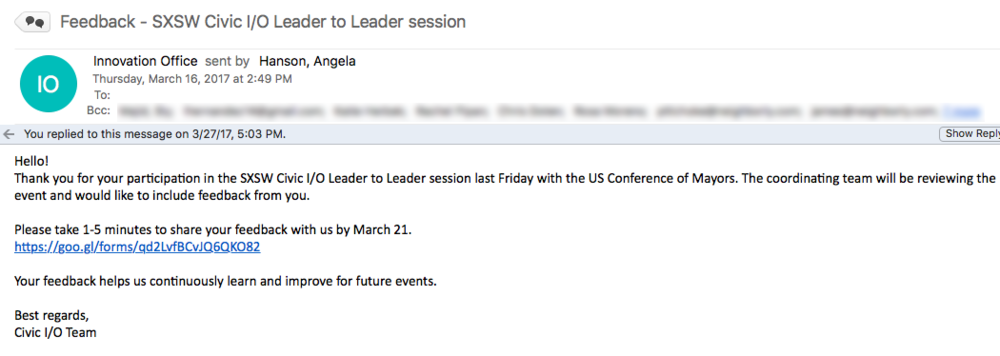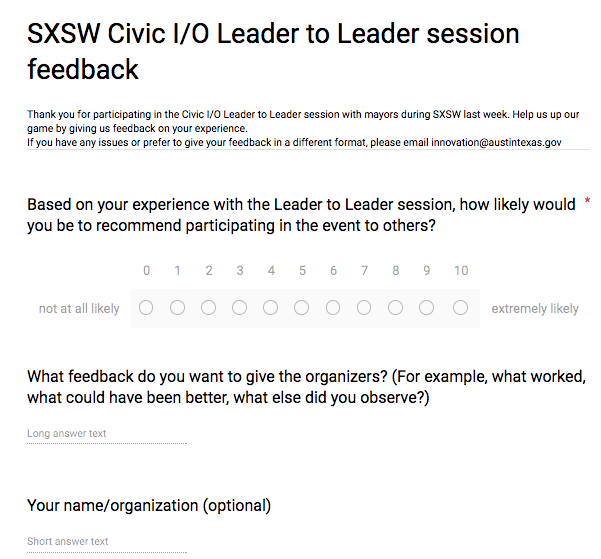Tool: The Net Promoter Score to Increase Accountability
The Net Promoter Score is one easy tool that can be used following an event, meeting, project, or any other kind of interaction to close the feedback loop and demonstrate accountability with your collaborators. This is a simple example outside of OGP of how it can be used.
A Tool in the Toolbox
Austin's Open Government Partnership (OGP) Subnational Pilot Program team includes a commitments portfolio team which supports all of Austin's OGP commitments with tools and resources needed to build the OGP principles of transparency, accountability, civic participation, and technology innovation into their work. The team has deployed the Net Promoter Score (NPS) to commitment teams so that they can use it with their collaborators to demonstrate accountability, close the feedback loop and build trust.
An Example of NPS Usage
This is a simple example of how the Net Promoter Score (NPS) tool can be used. The example is from a non-OGP context, an event co-coordinated by Austin staff and the US Conference of Mayors during South by Southwest called Leader-to-Leader. The event involved thought leaders delivering TED-talk style talks to a group of US mayors.

We wanted to know how the experience was from the speakers' perspective, so we adapted our internal template to create a survey and sent it to speakers. Here is the guidance we followed in this case and that we advise our OGP commitment teams to follow.
The Messaging
When sending the email requesting feedback, it was important to not bias the results. For instance, we had photos to share from the event, but chose to send those in a separate email so that it would not feel like a "gift" that the speakers may have felt compelled to reciprocate with positive feedback for us. Plus, the language needed to be as neutral as possible. Here is what we sent out:

And here is the linked NPS tool itself--just a simple Google form survey:

The Responses
Below are the actual responses we received.

Analysis and Follow Up
Based on the event staff's review of the feedback, we identified three main themes across the speaker's responses:
- We learned that several speakers wished they had exposure to more mayors
- We learned that several speakers wished they had more individual face time with mayors
- We learned that several speakers wished they had more time to talk about their topic
We borrowed the "We learned...We decided" language from a software service we use to close feedback loops called Insights. For each of the response themes we found, the team made decisions about how to improve. This was a one-off event so the relationship with speakers will likely be minimal in the future, but we still wanted to offer an opportunity for them to still get what they said they desired, so we offered to connect them individually with the mayors who participated in the event. When building a more sustained long-term relationship with collaborators, it is important to include these additional opportunities to interact after you have made your decisions. This not only demonstrates that you are serious about taking action as a result of your collaborators feedback but it also provides a pathway to continue to deepen your relationship with collaborators.

Coordinating this effort took probably 30 minutes and that effort is well worth the hard-to-quantify but important outcome of increasing accountability and building trust with collaborators. If you would like more information about this tool, this example, or for a copy of the tool and guidance, feel free to contact us innovation@austintexas.gov

